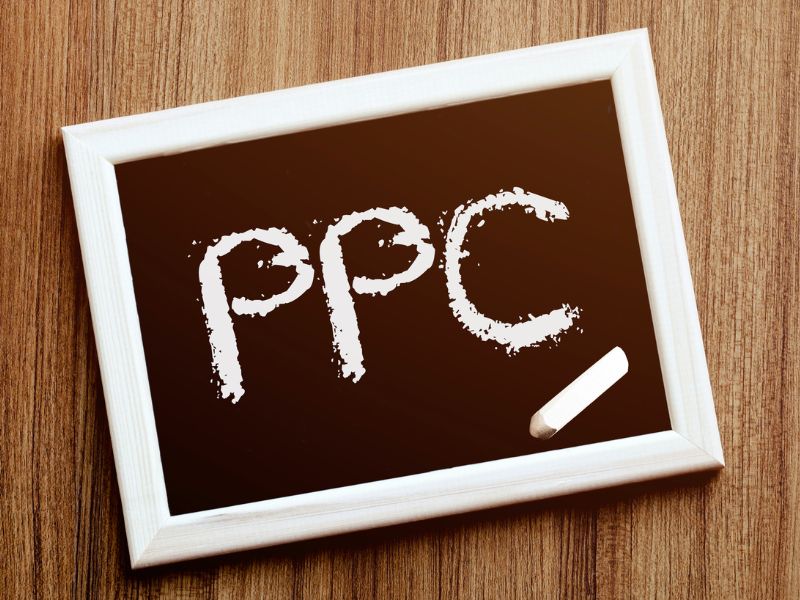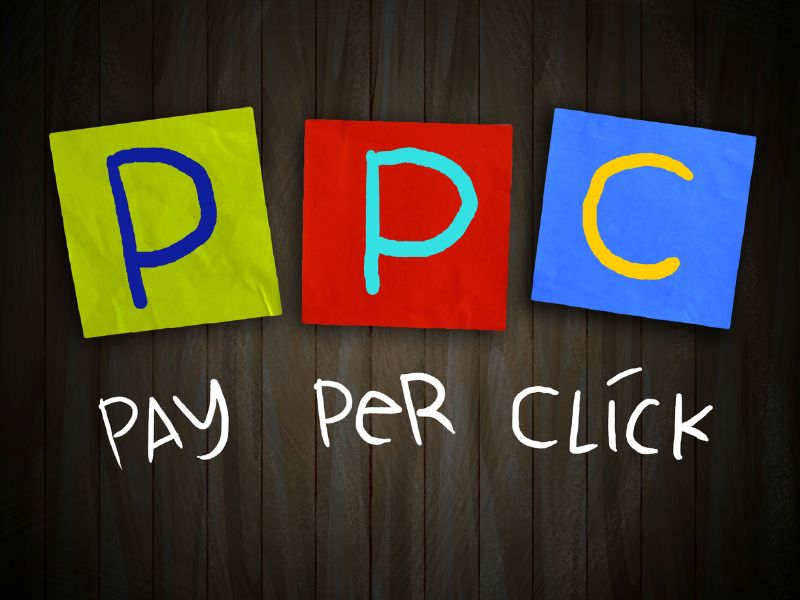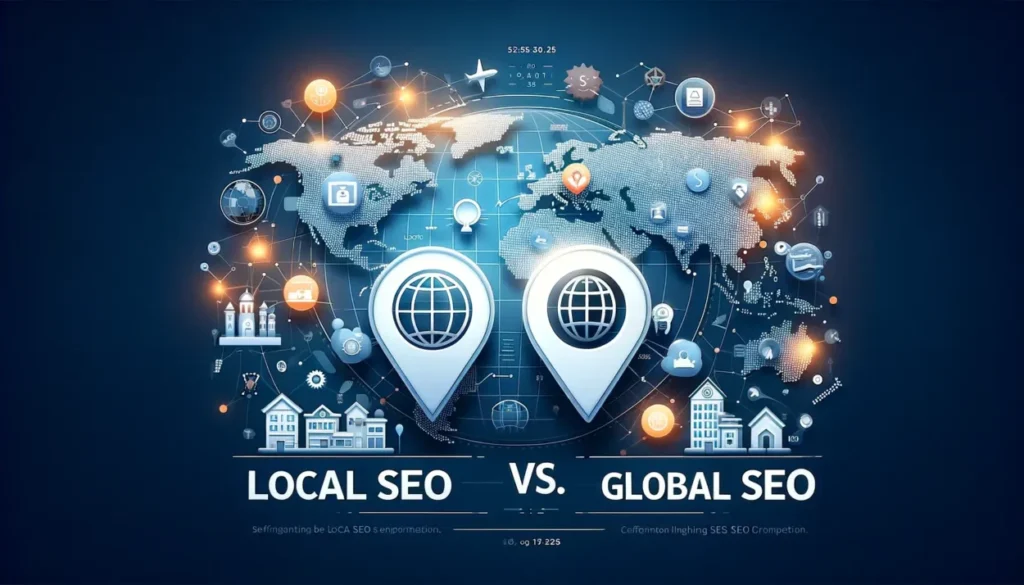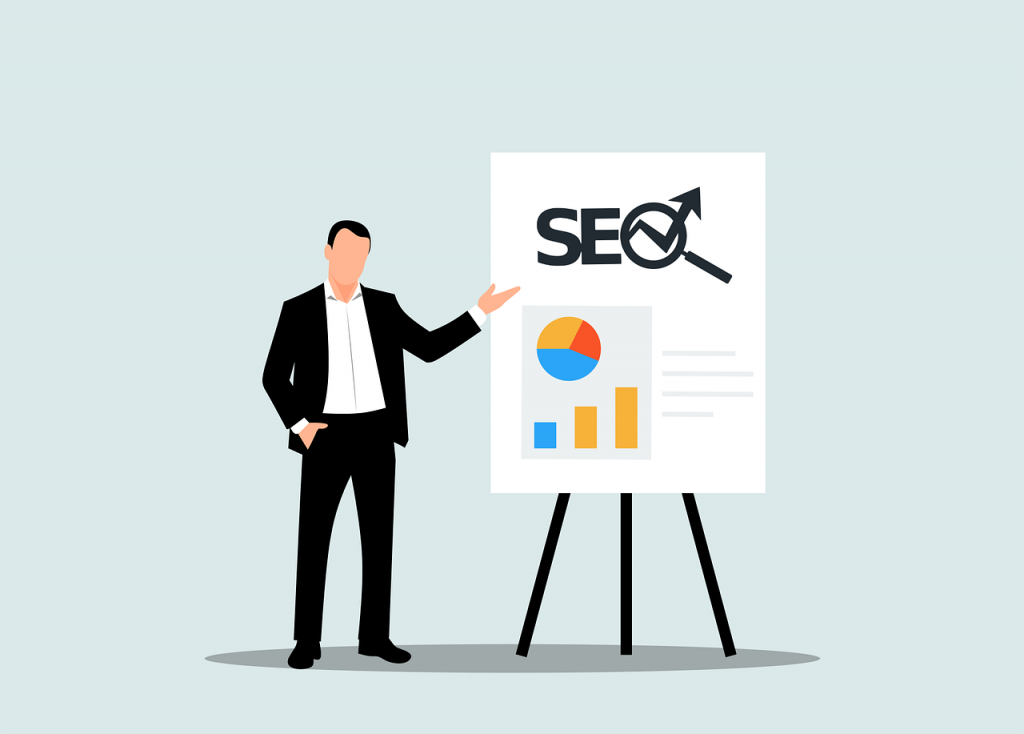In the bustling digital marketplace, where the domain name system plays a pivotal role in guiding traffic, Pay-Per-Click advertising stands out as a beacon, drawing potential customers closer with the promise of tailored solutions. This advertising model, akin to the first content-based search protocol, has transformed the way businesses connect with their audience, offering a precision that the arpanet computers of yore could scarcely imagine. Amidst the vast virtual communities that span the globe, PPC advertising takes center stage, allowing for niche industries and major companies alike to flourish in a space where the first commercial transaction has since unfolded into countless organic transactions.
As the sun of the net neutrality debate rises and sets, casting shadows on the landscape of data privacy, PPC advertising remains a constant, illuminating the pathways through which businesses journey toward revenue acceleration. Like the first emoticon that brought a human touch to the bulletin board system, PPC campaigns add a sparkle of personality to the first web-based webmail service, inviting engagement and fostering connections.
What is PPC?
PPC stands for pay-per-click, a digital marketing strategy where advertisers pay a small fee each time their ad is clicked. Think of it as a shortcut to boost website traffic, bypassing the slow and steady climb that comes with organic search engine optimization (SEO). It’s like buying a front-row ticket to your site’s performance instead of waiting in line.
One of the most popular arenas for PPC is search engine advertising. This is where businesses can bid for prime ad real estate in a search engine’s sponsored section. So if someone types in “PPC software,” and it’s a keyword you’ve bid on, your ad might just land in the spotlight at the top of the Google search results – giving you center stage on the search engine’s front page.
Understanding PPC Advertising
Delving into the intricate tapestry of PPC advertising, one must first grasp the foundational bricks that lay the groundwork. The PPC model, a digital auction house of visibility, dictates the placement and frequency of ads based on bids and relevancy. Understanding this model is akin to deciphering a cipher that unlocks the potential for free brand awareness and targeted reach.
Transitioning to a deeper layer, the importance of a quality PPC strategy cannot be overstated. It serves as a master plan, guiding campaigns to success amidst the competitive digital landscape. By employing ppc marketing best practices, advertisers can ensure their message resonates with precision and efficacy.
The Fundamentals of PPC Advertising
As we waltz further into the digital marketing ballroom, let’s twirl around the core concept that keeps the online advertising party alive: The Fundamentals of PPC Advertising. Imagine a bustling digital marketplace where every click acts as a potential customer knocking on the door. At the heart of this marketplace lies the ppc model, a mechanism as precise as a Swiss watch, ticking in sync with every user’s search query.
PPC, or pay-per-click, serves as the lifeblood for myriad businesses seeking visibility in the crowded online landscape. This model allows advertisers to bid on keywords, effectively securing a spot in the search engine’s sponsored links. When a curious browser tiptoes through the internet’s vast corridors and clicks on one of these links, the magic happens: the advertiser pays a small fee, as if dropping a coin into a well, wishing for a customer’s attention.
Among the glittering array of best payperclick platforms, each offers its own flavor of payperclick models, but the essence remains the same.
Decoding the PPC Model
Imagine a tapestry of keywords and bids, a digital marketplace where visibility is auctioned off to the highest bidder. Welcome to the vivid world of PPC, where the intricacies of a quality PPC strategy unfold in real-time. At the heart of this system is the auction-based approach, where advertisers bid for prime real estate in the search engine results. Each click, a potential customer’s interest piqued, represents an opportunity for businesses to convert curiosity into commerce.
Decoding this advertising model unveils a thrilling chase for clicks, where the bid amount is only a piece of the puzzle. The ad’s relevance to the searcher’s intent and the quality of the ad itself also play pivotal roles. Picture a bustling bazaar where not only the loudest shout gets attention, but the most relevant message. Advertisers must craft their campaigns with precision, ensuring that the content resonates and engages the audience at the right moment, lest the click leads merely to an echo chamber instead of a cash register’s chime.
Importance of Quality PPC Strategy
Just as a master chef carefully selects ingredients to create a culinary masterpiece, a meticulously crafted strategy for pay-per-click advertising can be the secret sauce to a flourishing online presence. Imagine a bustling digital marketplace where every click is a potential customer; here, the essence of a well-thought-out approach to PPC campaigns becomes crystal clear.
Crafting such a strategy is akin to charting a treasure map; it guides businesses through the intricate labyrinth of keywords, bidding wars, and ad placements. The precision of targeting, the allure of compelling ad copy, and the wisdom to optimize landing pages transform this journey into an expedition with lucrative destinations.
This strategy, brimming with insights and foresight, not only elevates click-through rates but also nurtures the growth of conversion rates, casting a spotlight on the brand in the crowded theater of the internet. It ensures that every penny invested works tirelessly, drawing in audiences like a magnet, and converting them into not just customers, but loyal ambassadors of the brand.

PPC Tools and Their Significance
Harnessing the power of CRM PPC tools becomes a game-changer, seamlessly blending customer data with ad campaigns to create a symphony of targeted engagement. As the landscape of digital advertising evolves, these PPC tools become invaluable artisans, sculpting precise and effective paths to connect with audiences.
Delving deeper, the focus shifts to the heart of campaign performance: goal metrics. Like a compass in a vast sea of data, these metrics guide marketers to the shores of success, spotlighting the impact of each click and conversion.
To accelerate the journey, advanced PPC tools emerge as the captains of the digital realm, steering campaigns towards their desired destinations with greater speed and agility.
Utilizing CRM PPC Tools
As the conversation shifts from the broad strokes of PPC advertising, imagine a world where every click, every lead, and every sale is not just a number, but a story unfolding within the heartbeat of your business. Herein lies the magic of harnessing Customer Relationship Management (CRM) tools specialized for PPC campaigns.
Picture a dashboard, vibrant with data, where goal metrics dance alongside customer interactions, each one captured with precision. These CRM tools are not just repositories of information; they are dynamic engines that drive targeted campaigns with an understanding of past behaviors, preferences, and engagements. With these tools, campaigns become more than mere advertisements—they transform into personalized conversations with potential customers, guiding them through a journey tailored to their unique needs and desires.
Accelerate the pulse of your campaigns by utilizing advanced CRM functionalities. Witness how they meticulously track the effectiveness of each click, while simultaneously nurturing leads and funneling them towards conversion with the finesse of a maestro conducting an orchestra.
Metrics That Matter in PPC
Seamlessly bridging from the intricacies of PPC advertising, it becomes essential to shine a light on the metrics that truly sculpt the success of such campaigns. In the realm of pay-per-click, numbers and data points are the paint and canvas for crafting a picture of triumph. Metrics such as click-through rates (CTR) offer a glimpse into the engagement levels, beckoning marketers to fine-tune their ads for maximum allure. Cost per click (CPC) whispers tales of financial investment, guiding strategists to balance their budgets with the precision of a tightrope walker.
Conversion rates stand as the grand storytellers, narrating the journey from mere clicks to cherished customer actions. Meanwhile, the return on ad spend (ROAS) unfolds the saga of profitability, allowing campaigns to be steered toward more lucrative waters. Each metric, a vital brushstroke, contributes to the masterpiece of a well-oiled campaign. With careful attention to these indicators, the landscape of PPC advertising transforms into a meticulously curated gallery of results-driven artistry.
Accelerating Results with Advanced PPC Tools
As the digital advertising landscape evolves, the race to harness the full potential of Paid Per Click (PPC) campaigns intensifies. Enter the realm of advanced PPC solutions – a suite of sophisticated software designed to turbocharge campaign results and propel advertising strategies into the stratosphere. Imagine a dashboard, brimming with real-time analytics, where every click, conversion, and keyword is not merely a data point, but a pulsing beacon guiding towards greater ROI.
These advanced systems offer a panoramic view of campaign performance, unlocking insights far beyond the reach of basic analytics. They delve into the nuances of user behavior, enabling advertisers to refine targeting with laser precision. Automated bid management becomes a breeze, ensuring ads appear at the opportune moment, while A/B testing tools conjure an alchemist’s lab where every tweak and twist can be tested for its golden potential.
The power of these advanced PPC instruments lies not just in their ability to accelerate results but also in their capacity to paint a picture of a possible future where each click holds the promise of growth and success.
SEO Strategy Vs PPC Strategy
In the digital marketing landscape, a well-crafted SEO strategy unfolds like a map, guiding websites through the dense forest of online content toward the sunlight of top search results. But for those seeking fast results, PPC campaigns are akin to a speedboat, slicing through the digital waves to immediate visibility. Yet, when the meticulous nature of SEO strategy converges with the swift agility of PPC, a harmonious dance ensues, yielding better results than either could alone. This synergy, when harnessed, allows PPC to inject a turbocharge into the SEO strategy, propelling it toward better results with the precision of an archer’s arrow.
SEO and PPC: A Comparative Study
As we dive into the vibrant tapestry of online marketing, imagine two dynamic forces at play, each with its own rhythm and pace. On one side, there’s the methodical art of SEO, unfolding like a meticulously crafted mosaic, where every piece is placed with consideration for long-term visibility and organic growth. On the other, PPC campaigns burst forth like fireworks, illuminating the digital sky with their promise of fast results and immediate impact.
In this comparative study, the intricacies of both strategies are explored, highlighting their distinct pathways to better results. SEO, a marathon of sorts, requires patience as it builds authority and rankings over time through content creation, keyword optimization, and link building. It is the steady climb up a mountain, where the summit is high visibility and credibility in the search engine landscape.
Conversely, PPC offers a sprinter’s speed, cutting through the competition to place products or services directly in the limelight. With its ability to target specific demographics and keywords, it provides fast results and a quick influx of traffic.
The Synergy Between SEO and PPC
As we turn the page from the intricate world of PPC Tools and Their Significance, let’s delve into the harmonious relationship between SEO and PPC that can elevate a marketing campaign. Envision the internet as a bustling metropolis, with SEO and PPC as two main thoroughfares that, when working in concert, lead to a thriving business district.
The Synergy Between SEO and PPC weaves a tapestry of tactical elements, each complementing the other in a dance of digital marketing. Imagine a gardener nurturing plants in a garden—SEO is the long-term cultivation of organic visibility, while PPC acts as the timely sprinkles of water that provide immediate visibility and growth boosts.
In this delicate balance, the insights from PPC campaigns light up the path for SEO efforts, highlighting effective keywords and consumer behavior patterns. Conversely, the enduring nature of SEO provides a sturdy foundation that PPC can leverage for better results. United, they form a comprehensive strategy, much like the sun and rain working in tandem to usher in a bloom of flowers in a vibrant garden.
How PPC Can Complement Your SEO Strategy
Emerging from the realm of PPC tools, one imagines a world where strategies intertwine to elevate a brand’s online presence. Picture a mosaic, where each PPC advertisement acts as a vibrant tile that, while stunning on its own, truly dazzles when integrated with the broader masterpiece of digital marketing efforts. This is the essence of how Paid Per Click advertising can enhance Search Engine Optimization initiatives.
Imagine a user, intrigued by a PPC ad, clicking through to a landing page. This initial interaction, although driven by paid efforts, sows the seeds for future organic engagement. The data harvested from PPC campaigns—keywords that convert, ad copy that resonates, demographic insights—becomes a treasure trove for refining SEO tactics. This treasure trove helps in identifying content opportunities and tailoring user experience to match the intent captured in paid searches.
Moreover, PPC can act as a spotlight, illuminating the path to high-value pages that may otherwise remain obscured in the vastness of the internet.
Crafting the Perfect PPC Ad Copy
Crafting the perfect PPC ad copy is a blend of art and science, where each word in ad text must dance off the page, enticing viewers to click through a symphony of compelling messages. With ad scheduling fine-tuned, these snippets of creativity reach audiences at the peak of their engagement, ensuring the rhythm of interest is met with the beat of opportunity.
Transitioning into the realm of video ads, visual storytelling comes to life, offering a dynamic canvas where products and services pirouette in full color and sound. Video ads, timed impeccably with ad scheduling, capture hearts and minds, fueling desires with moving imagery.
Writing Compelling Ad Text
Imagine the gentle brush of a painter on canvas, each stroke adding depth and emotion to the masterpiece. Just like that artist, crafting the perfect PPC ad copy requires a blend of creativity and precision to connect with the hearts and minds of potential customers. Mastering the art of ad text is like composing a symphony where every word plays a crucial note, resonating with the audience and leading them to a crescendo of engagement.
As the sun rises, ad scheduling aligns each message with the rhythms of the day, ensuring that ads reach viewers when they’re most receptive. In this dance of timing and expression, ad assets become the jewels that adorn the text, sparkling with promise and inviting clicks with their allure. With ad scheduling fine-tuned, the ad text must sing, its message clear and compelling, a siren’s call amidst the vast digital ocean.
While video ads weave their visual tapestry, the ad text stands as the narrator, guiding the viewer through the story, each word a stepping stone to the desired action.
Making the Most of Video Ads
As we pivot from the world of search engine rankings, let’s immerse ourselves in the art of visual storytelling within the realm of pay-per-click advertising. Envision a canvas where every frame captivates, every second counts, and the narrative unfolds not through paragraphs but through powerful imagery and sound.
Unlocking the potential of motion picture in advertising involves a symphony of moving visuals that resonate with viewers, leaving an indelible mark on their memory. To craft these memorable snippets, it’s essential to leverage ad assets to their fullest. Imagine a blend of vibrant colors, dynamic characters, and a soundtrack that pulses with the heartbeat of the brand narrative. These elements interweave to create a rich tapestry that beckons viewers to engage, connect, and act.
Incorporating additional ad assets, such as on-screen text overlays and call-to-action buttons, enhances the silent storytelling when sound might be turned off. Each frame is meticulously designed to convey the essence of the message, transforming passive watchers into active participants eager to explore what’s been offered.
Incorporating Additional Ad Assets
As we gracefully pivot from the dance of SEO and PPC strategies, let’s sprinkle some extra magic to our pay-per-click endeavors. Imagine a canvas where the hues of additional elements enhance the picture beyond the primary image. In the realm of crafting advertisements that resonate, incorporating supplementary components can be akin to adding the perfect accessories that bring an outfit to life.
Envision the scene where a simple advertisement blossoms with the inclusion of interactive extensions. A carousel of images showcases products with such clarity that viewers can almost feel the texture through their screens. Sitelink extensions invite onlookers into a labyrinth of relevant pages, each promising a treasure trove of information and opportunities.
Callouts whisper the virtues of offers too tempting to ignore, while structured snippets provide a sneak peek into the variety of services available, like a menu that entices the senses. Together, these elements create a symphony that elevates the humble advertisement into a beacon, guiding potential customers through the bustling marketplace of the internet with ease and flair.
Customizing Ad Scheduling for PPC
Grasping how the ad auction works lays a foundation for tapping the rhythmic pulse of Pay-Per-Click (PPC) campaigns through custom ad scheduling. As the virtual gavel falls within the ad auction, a blend of maximum bids and the ad’s quality score determines the victor. Bid adjustments are the fine-tuning knobs, empowering advertisers to amplify their maximum bid in real-time, responsive to the audience’s online habits. The power of these adjustments radiates, allowing for strategic increments when the sought-after eyes are most likely to engage.
Understanding Ad Auctions
Having mastered the craft of enticing ad copy, it’s time to pull back the curtain and reveal the bustling marketplace where these meticulously crafted messages vie for visibility: the ad auction. Imagine a vibrant bazaar, where each advertisement is like a trader, eagerly bidding for the prime spots that catch the consumer’s eye. In this dynamic environment, the concept of bid adjustments comes into play, allowing for strategic maneuvers that can significantly influence the outcome.
Understanding ad auctions is akin to watching a well-choreographed dance. Each step is a bid, each movement a calculation of the maximum bid one is willing to offer for a coveted position on the search results page. As bids are placed, the auction system considers them in real-time, determining which ads will appear and in what order, based on a combination of the maximum bid and the ad’s relevance and quality.
The art of bid adjustments is like tweaking the tempo of the dance. A slight increase here, a careful decrease there, all in pursuit of the perfect rhythm that aligns spending with the desired visibility.
Implementing Bid Adjustments
As if turning the page to a new chapter in a well-crafted novel, we segue from the artistry of ad composition to the strategic world of auction dynamics. Picture a bustling virtual marketplace, where each advertisement vies for the spotlight, not through a cacophony of sound but through the silent, swift ballet of bidding. The key to mastering this dance lies in the deft implementation of incremental bid alterations—tweaks and turns in the financial offer for ad placements that can make all the difference.
In this intricate tapestry of digital advertising, envision each bid as a brushstroke on a canvas, where the slightest change in shading can transform the entire scene. Adjustments are made in real-time, responding to the ebb and flow of online traffic, ensuring that advertisements appear at the most opportune moments. This nimble maneuvering in the budgetary realm allows campaigns to flourish, reaching potential customers when they are most likely to engage, all the while keeping a vigilant eye on the return on investment.
The Power of Custom Ad Scheduling
As the final full stop lands on your carefully crafted ad copy, a new chapter in your advertising playbook awaits—delving into the art of timing with finescaled ad timing customization. Imagine a bustling digital marketplace, brimming with potential customers, where each second could usher in a flurry of clicks and conversions. Here, harnessing the power of tailored ad timing becomes paramount, as it allows for ads to dance across screens at the most opportune moments.
Picture this: a cafe owner targeting the early morning rush, setting ads to pirouette into view alongside the first sips of coffee. Or a fitness brand aligning their message with the post-work adrenaline spike. This is the magic of custom ad timing—aligning promotional messages with the rhythm of the audience’s daily lives. It’s about creating a symphony of visibility, ensuring that ads waltz into the spotlight when potential buyers are most receptive, turning casual browsing into a harmonious journey towards the ‘buy’ button.
PPC Campaigns and Their Key Components
As ad campaigns take flight, setting parameters becomes the pilot, guiding the journey toward success. Vividly, these parameters paint the landscape of ppc campaigns, from the budget to keyword match types. Each setting, a delicate brushstroke that shapes the outcomes.
Within this canvas, negative keywords emerge as the shadows that bring depth, subtly refining the reach of ad campaigns by filtering out irrelevant searches. Skillfully chosen, they dance with keyword match types, a choreography that prevents wasteful clicks and funnels budgets effectively.
The crescendo of this artful endeavor is conversion tracking, the beacon that captures the essence of performance.
Setting Parameters for Successful Ad Campaigns
As the digital sun rises on a new day of online advertising, let us delve into the art of crafting the perfect ad campaign by setting the most effective parameters. Picture a painter before a blank canvas, with every shade and brush at their disposal; similarly, the creation of ad campaigns begins with a thoughtful selection of hues and strokes, represented by meticulous choices in set parameters.
In the kaleidoscope of online marketing, keyword match types glimmer as the cornerstone. They guide the search engines, like stars guiding ships, ensuring ads appear for the intended queries. Imagine a garden where each plant is carefully chosen and placed—this is the essence of selecting keyword match types, cultivating a landscape where each word serves a purpose, attracting the right visitors like bees to nectar.
Amidst this, negative keywords stand as vigilant sentinels, guarding against irrelevant clicks that drain budgets and dim the luminosity of ad campaigns.
The Role of Negative Keywords in PPC Campaigns
As the digital clock ticks forward, a new chapter unfolds, revealing the often-overlooked craft of weaving negative keywords into the fabric of search advertising. Imagine a gardener meticulously plucking away unwelcome weeds to ensure the most vibrant flowers can thrive; similarly, negative keywords serve as the vigilant gatekeepers, ensuring the garden of online visibility flourishes with only the most relevant traffic.
Negative keywords are the silent sentinels that stand guard against the irrelevant clicks that can drain an advertising budget faster than a leaky faucet. By specifying which search terms should not trigger ads, advertisers can paint a more precise picture of their target audience, like an artist who knows exactly which colors not to blend on their palette.
With up to four mentions, negative keywords emerge as the unsung heroes of campaign optimization. Their role is akin to the fine-tuning of a grand piano, each adjustment bringing harmony to the performance, allowing the melody of genuine interest to resonate clearly through the cacophony of the internet’s endless queries.
Maximizing Conversion Through Tracking
As the sun sets on the art of fine-tuning ad schedules, a new dawn emerges with a golden opportunity to transform clicks into customers. In the realm of digital advertising, the alchemy of maximizing conversions lies not just in the crafting of enticing clickable banners, but in the meticulous analysis of performance data, an often-overlooked treasure trove.
Imagine a bustling marketplace where every footfall, every pause, and every interaction is quietly observed and recorded by a watchful scribe. This is the essence of conversion tracking in the online advertising landscape. By scrutinizing the journey from the initial click through the winding path to the final action, savvy marketers can pinpoint the most fertile moments that are ripe for optimization.
Conversion tracking, akin to setting a compass for a treasure hunt, allows for the distillation of raw data into actionable insights. It becomes possible to identify which creative elements resonate most with the audience, which pathways are the smoothest, and which calls to action have the magnetic pull that propels a casual browser into a committed customer.
PPC Ads Across Different Platforms
Embarking on a journey through the landscape of PPC ads, one discovers Google Ads as a lush, expansive garden flourishing with opportunities for visibility. Each click, a delicate dance of algorithmic precision, propels businesses into the spotlight amidst a sea of search results. Navigating Google Ads becomes an art form, where crafting the perfect bidding strategy unveils a tapestry of potential customers.
Beyond the realm of Google, Microsoft Ads emerge as a hidden gem, a tranquil alcove that offers a unique vantage point with less competition.
Navigating Google Ads for PPC
As we navigate away from the essentials of crafting PPC campaigns, let’s dive into the vibrant world of Google Ads, where possibilities bloom like a digital garden of opportunities. Picture a bustling marketplace, humming with the energy of businesses vying for visibility. Here, Google Ads stands as a beacon, guiding users through the intricacies of PPC ads with a deft hand.
Envision the colorful dashboard of Google Ads, an artist’s palette where each tool and feature adds a unique hue to the overall masterpiece. Users, both seasoned and new, are greeted by an intuitive interface, offering a clear path to create and manage PPC ads. The platform is a kaleidoscope of options, from selecting the right keywords to refining target audiences, each decision painting a stroke towards the ultimate goal of engagement and conversion.
With every click, the magic of Google Ads unfolds, revealing insights and analytics that are akin to a map of hidden treasures, waiting to be discovered.
Exploring Microsoft Ads for PPC
As we delve deeper into the realm of PPC advertisements, let us meander through the verdant landscapes of Microsoft Ads, an alternative yet equally fertile ground for PPC efforts. Here, the expanse of possibilities stretches out, offering a distinctive terra firma for advertising that complements the ubiquitous terrain of Google Ads.
Exploring Microsoft Ads for PPC entails a journey into a platform that, while less traversed than its Google counterpart, presents an array of unique opportunities for reaching potential customers. Microsoft Ads—formerly known as Bing Ads—provides access to a diverse audience, often characterized by higher income levels and a propensity for spending on products and services advertised.
The interface of Microsoft Ads, resplendent with tools and functionalities, allows for a tailored approach to PPC ads. Advertisers can harness the power of Bing’s search engine, which powers not only Bing’s own searches but also those of Yahoo and other partner sites.
The Effectiveness of 1 PPC Ads
As we waltz from the intricacies of crafting PPC campaigns, let us illuminate the canvas of 1 PPC ads and their compelling effectiveness. Picture this: in the bustling digital bazaar, PPC ads stand as beacons, guiding potential customers to the treasure troves of websites eager for engagement. Unlike traditional billboards that fade into the skyline, these PPC ads, especially those curated through Google Ads, are like fireflies, flickering with opportunity and capturing the gaze of passersby in the online world.
The effectiveness of 1 PPC ads is akin to a maestro conducting an orchestra—every click, a note; every impression, a harmony. The crescendo builds as PPC ads harness the power of intent, reaching out to audiences who are actively seeking, not just idly browsing. These ads dance across the search engine results, inviting clicks with the promise of fulfilling the searcher’s quest.
Decoding CPC Ad Rank Through Google Analytics
Venture into the analytics labyrinth, where Google Analytics unfurls its scrolls, revealing the intricate dance between data and pay-per-click endeavors. Here, the enigmatic CPC Ad Rank emerges, a beacon of insight, illuminating the path to understanding the potency and position of ads in the bustling digital marketplace. Through Google Analytics, one unravels the threads that bind this rank to performance, peering into the essence of click costs and strategic placement amongst the stars of search results. As insights crystallize, the benefits of Google Analytics for steering these campaigns into prosperous harbors become undeniable, shedding light on the terrain of digital advertising with precision and acumen.
The Link Between Google Analytics and PPC
As the digital tapestry weaves through the vast expanse of online advertising, a shimmering thread emerges, connecting the dots between performance metrics and advertising efforts. Embarking on this journey, one discovers the intricate relationship between analytical data and Pay-Per-Click (PPC) endeavors. Imagine a treasure map, with Google Analytics serving as the compass that guides marketers through the dense jungle of digital clicks and impressions.
This invaluable tool sheds light on user behavior, allowing for a recalibration of targeting strategies that can lead to a more cost-effective allocation of advertising budgets. By delving into the treasure trove of data available, advertisers can observe the nuances of traffic, engagement, and conversion patterns. The insights gleaned from this exploration enable a business to refine its paid search initiatives, ensuring that each click not only resonates with the intended audience but also aligns with the overarching goals of the advertising journey.
Understanding CPC Ad Rank
As we gracefully pivot from the diverse landscape of PPC ads across various platforms, let us delve into the intricate mechanics of how certain advertisements claim their prime spots in search results. Imagine a bustling digital marketplace, where every click is a potential treasure, and the cost-per-click (CPC) ad rank is the compass guiding advertisers to the X that marks the spot.
In this realm, understanding CPC ad rank is akin to deciphering a secret code that unlocks the visibility of promotional messages. A high ad rank signifies a prominent position, where ads bask in the sunlight of user attention, while a lower rank relegates them to the shadows of search engine result pages. The ad’s position is not determined by chance but by a calculated score that blends the CPC bid with the relevance and quality of the ad itself.
Advertisers who master the nuances of this system can craft their bids and refine their content, ensuring their ads are not only seen but also resonate with the audience.
Benefits of Google Analytics for PPC Campaigns
As we navigate the vast seas of digital advertising, let’s anchor down to explore the treasures that Google’s analytical tools can unearth for pay-per-click endeavors. Harnessing the power of these tools unveils a trove of benefits that can elevate promotional strategies to new heights.
Delving into the analytics provided, advertisers find themselves equipped with a compass pointing towards improved decision-making. Insightful data on audience behavior becomes the map leading to more effective targeting. Each click, each visit, paints a part of the picture, revealing which adverts resonate with the audience and why.
Furthermore, the ability to monitor campaign performance in real-time allows for the steering of promotional efforts with precision. Trends and patterns emerge from the depths of data, guiding adjustments that can enhance the performance of adverts, ensuring that resources are allocated to the most fruitful campaigns.
In the bustling marketplace of the internet, where every click is a potential treasure, these analytics act as a lighthouse, guiding advertisers safely through the fog of competition, towards the shores of success.
A Deep Dive Into Meta Ads
Navigating through premium templates can elevate the visual appeal and effectiveness of your advertising efforts. These premium templates are crafted with precision, offering a tapestry of colors and designs that resonate with diverse audiences and industries. As the canvas of inclusivity broadens, clusive templates emerge, reflecting a spectrum of cultures and identities, thus forging a connection with a broader audience. The impact of these thoughtful designs is profound, fostering an environment where every viewer feels represented and engaged. To further enhance your advertising knowledge, a plethora of additional resources awaits, ready to demystify the art of crafting compelling advertisements with expert precision.
Premium Templates for Meta Ads
Navigating through the complexities of online advertising can feel like deciphering an enigmatic puzzle, yet the discovery of perfectly crafted ad templates can illuminate the path to success. Imagine a treasure trove of exquisitely designed templates, tailored to elevate the advertising experience on Meta’s platforms. These templates, far from the mundane, are meticulously engineered with sophisticated aesthetics and the flexibility to adapt to various brand narratives.
Every pixel, color scheme, and font choice is thoughtfully considered, ensuring that each advertisement not only captures attention but also resonates with the desired audience. This array of templates transcends the ordinary, offering a seamless blend of functionality and elegance. With these tools at one’s disposal, the crafting of compelling advertisements becomes an art form, a harmonious symphony of visuals and messages that engage and inspire potential customers.
These meticulously designed templates serve as a beacon, guiding advertisers through the ever-evolving landscape of social media promotion with confidence and flair.
Inclusive Templates and Their Impact
As we turn the page from the analytical depths of Google Analytics, a fresh canvas awaits, one where inclusivity paints a brighter future for advertising. The magic unfolds with Inclusive Templates, a kaleidoscope of design options that resonate with a diverse global audience. These masterfully crafted frameworks extend beyond mere aesthetics, embracing a spectrum of cultures, languages, and identities. They are not just templates; they are bridges, connecting brands with hearts and minds across continents.
Imagine a template that mirrors the vibrant celebration of Diwali, with its warm hues and festive motifs, or one that captures the rich tapestry of Black History Month, echoing the voices and triumphs of generations. The impact is profound—engagement soars as viewers see their own stories reflected in the ads they encounter. Inclusive Templates are more than tools; they are heartfelt invitations to a world where every click signifies a step towards unity and understanding in the digital marketplace. Here, every brand can find its true colors, and every consumer, a reflection of their unique identity.
Additional Resources for Understanding Meta Ads
As the digital horizon stretches before us, brimming with opportunities, it’s essential to have a compass to navigate the intricate world of online advertising. Venturing into the depths of Meta’s advertising platform requires more than just a cursory understanding; it demands a treasure map of knowledge and guidance.
One beacon that stands tall, casting a light on the complexities, is the collection of enlightening guides, webinars, and case studies offered by various marketing gurus. These detailed compendiums serve as the perfect adjunct for those yearning to master the art of advertising on Meta platforms. They provide a kaleidoscope of insights, from crafting compelling narratives that resonate with audiences to analyzing the nuances of audience engagement metrics.
For explorers seeking to sharpen their acumen, industry forums and discussion panels abound, where one can exchange wisdom with fellow marketers and learn from the triumphs and tribulations of others.
Guides to Ace Your PPC Strategy
Embark on a journey through the vibrant landscape of PPC advertising with “The Ultimate Guide to PPC Advertising.” Picture a comprehensive roadmap unfolding, brimming with rich insights that promise to elevate your mastery of the digital marketing realm. Transition seamlessly into the “Plain-English Guide to PPC Advertising,” offering a clear, jargon-free beacon of understanding, illuminating the intricacies of paid search with effortless clarity. Culminate your expedition with “The Definitive Guide to PPC Advertising,” a treasure trove of expert knowledge, standing as the ultimate guide and the definitive resource for crafting an unparalleled strategy in the ever-evolving frontier of pay-per-click advertising.
The Ultimate Guide to PPC Advertising
Having navigated the complex currents of Meta ads, it’s time to cast a wider net into the digital marketing ocean. Imagine embarking on a voyage across the vast, ever-changing seas of online advertising, where the beacon of The Ultimate Guide to PPC Advertising shines as a lighthouse for those seeking mastery over the tides of pay-per-click endeavors.
This guide is akin to an experienced captain’s log, filled with meticulously charted maps that detail the intricate archipelago of PPC advertising. Each island represents a crucial element: from crafting compelling advertisements that capture the essence of a brand’s message to decoding the enigmatic algorithms that govern the visibility of each sponsored link. As the guide unveils the secrets of effectively targeting audiences, the shimmering waters of potential customer engagement come into view, reflecting the bright possibilities of increased traffic and conversions.
For those who prefer a less ornate map, the plain-english guid to PPC Advertising offers a clear path through the technical jargon, transforming the perplexing language of PPC into a series of straightforward signposts.
Plain-English Guide to PPC Advertising
As we pivot from the intricacies of Meta Ads, imagine stepping into a landscape where the complexities of pay-per-click (PPC) advertising are distilled into a clear, flowing stream of actionable insights. Here, we wade into the Plain-English Guide to PPC Advertising, a welcoming handbook that translates the jargon-filled world of PPC into approachable language, ripe for comprehension and mastery.
This friendly guide acts as a compass through the ever-shifting terrain of PPC. Imagine a pathway marked with signs, each explaining the necessary steps to craft a successful PPC strategy without the bewildering technical lingo. From selecting the right keywords like choosing the freshest produce at a market, to crafting compelling ads that resonate like a catchy tune, every piece of advice is offered with clarity and ease.
With the Plain-English Guide, the fog of confusion lifts, revealing a bright clearing where the once-intimidating aspects of PPC become as familiar as a well-trodden path in your favorite park.
The Definitive Guide to PPC Advertising
Bridging the gap from the intricacies of Meta Ads, let’s embark on a journey through the vibrant landscape of The Definitive Guide to PPC Advertising. Envision a canvas where every click is a burst of color, adding depth to the picture of digital success. This guide is the artist’s palette, offering a spectrum of strategies to paint a successful pay-per-click narrative.
Imagine stepping into a gallery where The Definitive Guide to PPC Advertising is the masterpiece on display. Here, the brushstrokes detail how to optimize bids, select the most engaging keywords, and craft compelling advertisements that beckon viewers to engage. This guide illuminates the path to harness the potent power of search engines, turning searches into valuable traffic and clicks into conversions.
Within these pages also lies a Plain-English Guide, a beacon for those seeking clarity amidst the jargon-filled sea of PPC. It decodes complex concepts with ease, guiding readers through the labyrinth of PPC Advertising with a friendly, approachable tone.
Conclusion
Navigating the labyrinthine world of PPC advertising can be as thrilling as embarking on a treasure hunt in the digital realm. Imagine each click as a stepping stone leading advertisers closer to the coveted treasure chest – conversions and brand success. The vibrant tapestry of PPC strategies unfurls, revealing a kaleidoscope of possibilities: a meticulous blend of analytics, creativity, and timing. Each component, from crafting enthralling ad copy to mastering the art of ad scheduling, harmonizes to create a symphony that resonates with potential customers.
As the journey culminates, marketers stand at the precipice of the future, equipped with a next-level approach to captivate audiences. The PPC landscape is a dynamic playground where the rules of engagement are continually rewritten. In this expanse, social media serves as a bustling bazaar of ideas, where each ad is a storyteller, weaving narratives that connect with the human experience. A thorough understanding of this guide will illuminate the path, offering marketing tips to sail through the complex yet rewarding seas of PPC advertising. The best place to start is here, where every click is a potential story waiting to unfold.















